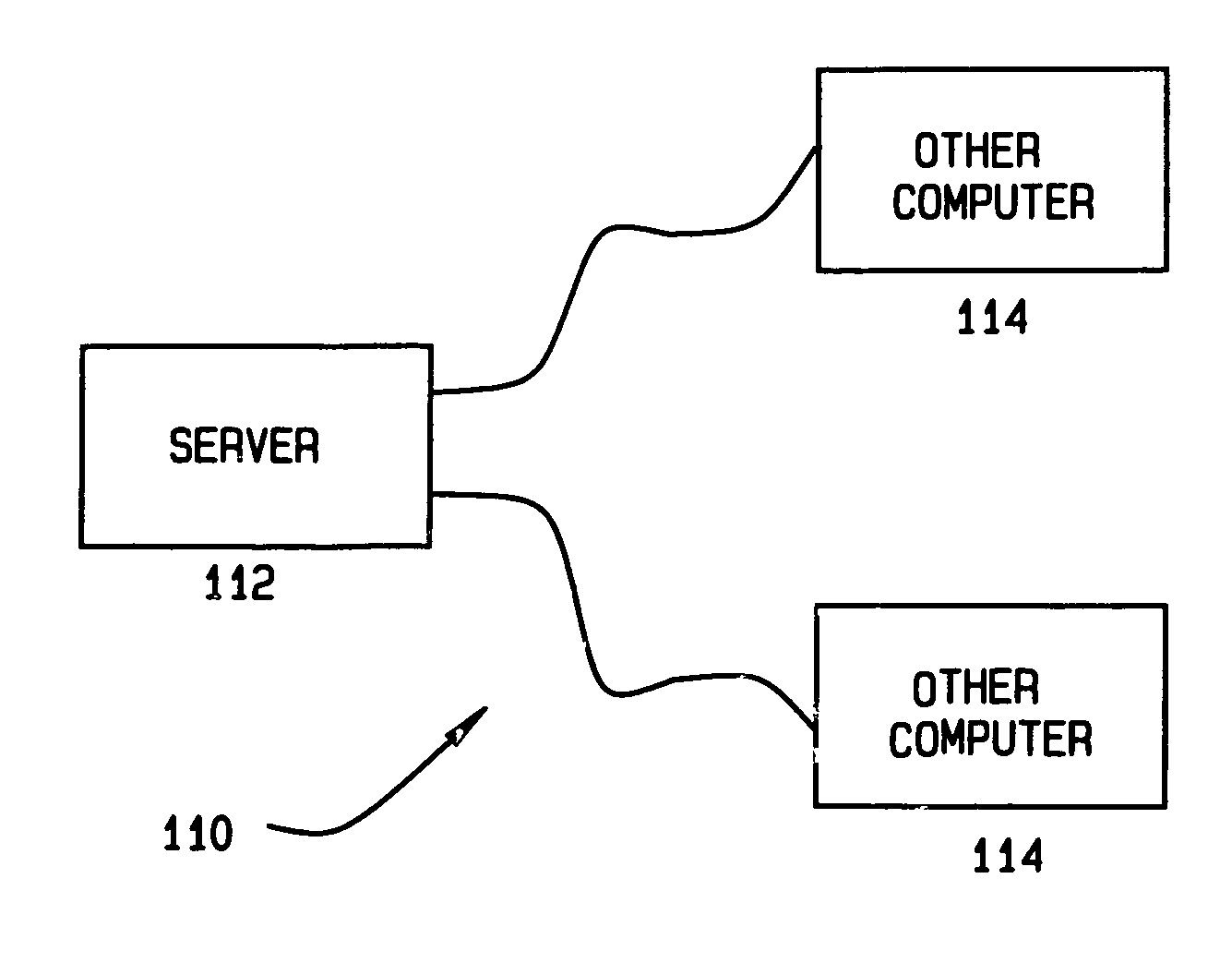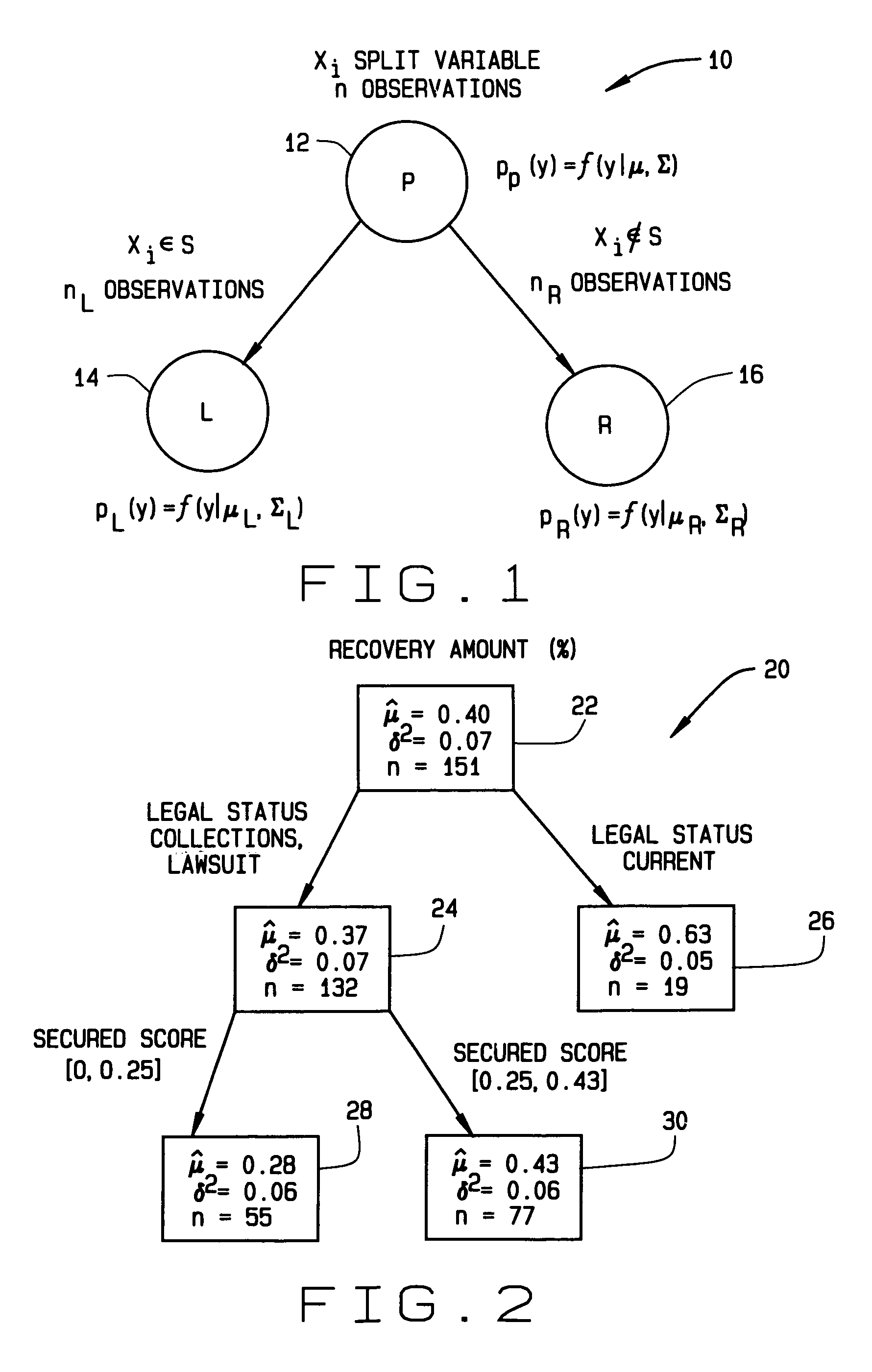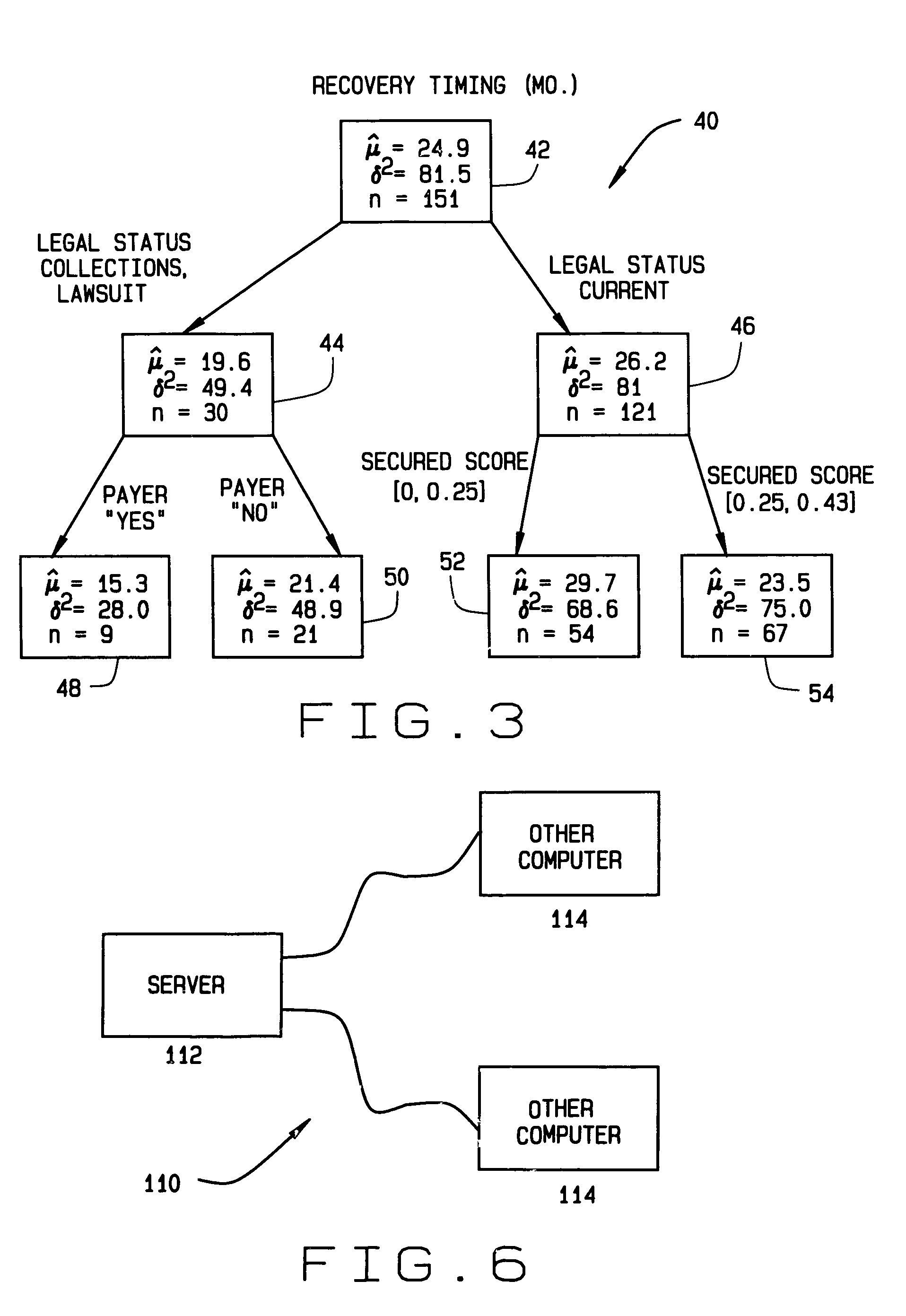Multivariate responses using classification and regression trees systems and methods
- Summary
- Abstract
- Description
- Claims
- Application Information
AI Technical Summary
Benefits of technology
Problems solved by technology
Method used
Image
Examples
Embodiment Construction
[0011]Classification and Regression Tree (CART) analysis is founded on the use of p explanatory variables, X1, X2, . . . , Xp, to predict a response, y, using a multi-stage, recursive algorithm as follows:
[0012]1. For each node, P, evaluate every eligible split, s, of the form Xi∈S, Xi∉S, on each predictor variable, by associating a split function, φ(s,P)≧0 which operates on P. The split forms a segregation of data into two groups. The set S can be derived in any useful way.
[0013]2. Choose the best split for each node according to φ(s,P). This could be the maximum or minimum split function value for that node, for example. Each split produces two child nodes.
[0014]3. Repeat 1 and 2 for each child node.
[0015]4. Stop when apriori conditions are met.
[0016]FIG. 1 illustrates a single split 10 where a heterogeneous parent node, P, 12 is observed to identify a split that is used to segregate a heterogeneous parent node, 12 into more homogeneous child nodes, such as node L 14 and node R 16...
PUM
 Login to View More
Login to View More Abstract
Description
Claims
Application Information
 Login to View More
Login to View More - R&D
- Intellectual Property
- Life Sciences
- Materials
- Tech Scout
- Unparalleled Data Quality
- Higher Quality Content
- 60% Fewer Hallucinations
Browse by: Latest US Patents, China's latest patents, Technical Efficacy Thesaurus, Application Domain, Technology Topic, Popular Technical Reports.
© 2025 PatSnap. All rights reserved.Legal|Privacy policy|Modern Slavery Act Transparency Statement|Sitemap|About US| Contact US: help@patsnap.com



